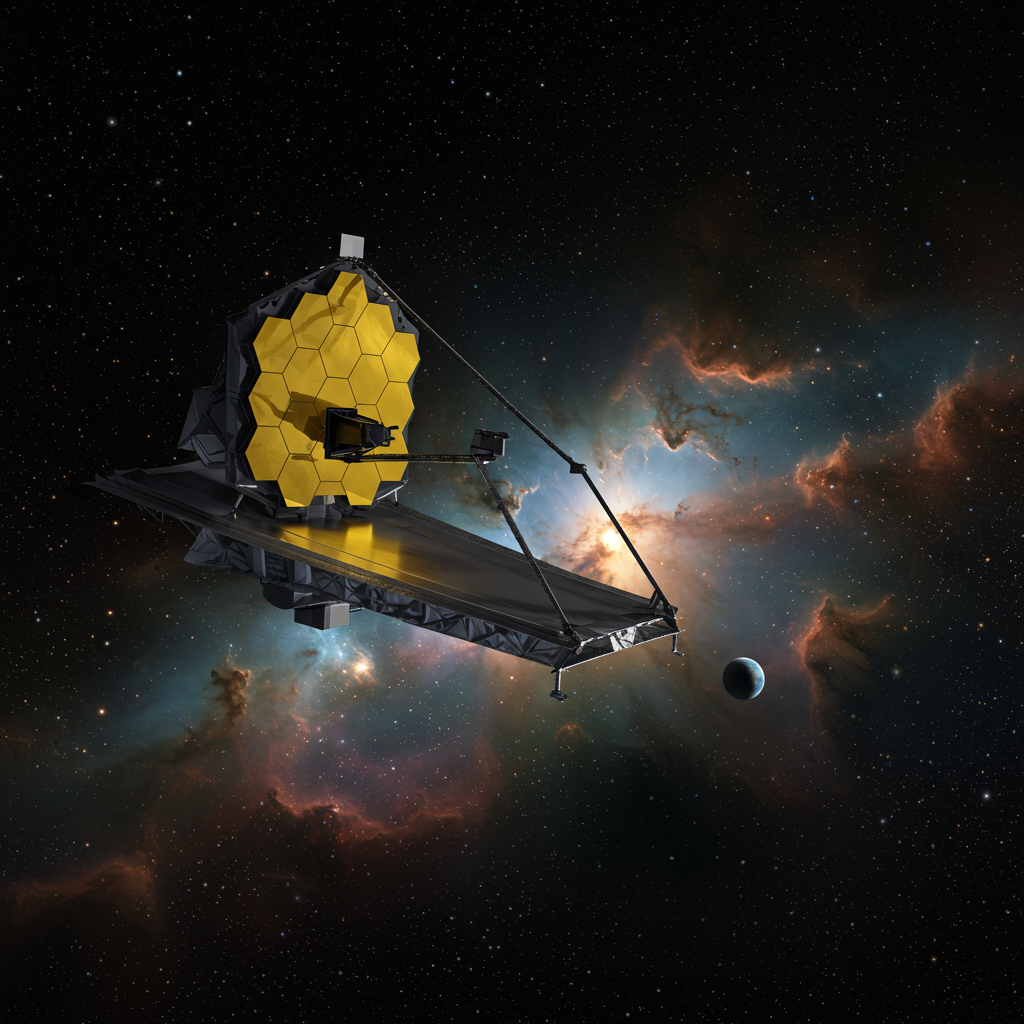The James Webb Space Telescope (JWST), humanity’s most powerful infrared eye in the sky, has added another groundbreaking achievement to its resume: the first time it has directly imaged and confirmed the existence of an exoplanet. This milestone demonstrates Webb’s exceptional capability to peer into distant star systems and capture the faint glow of worlds orbiting other stars.
The newly discovered exoplanet, officially designated TWA 7b, orbits a young star named TWA 7, located about 110 light-years away in the constellation Antlia. This stellar system is remarkably youthful, estimated to be only around 6 million years old – a mere infant compared to our solar system’s 4.5 billion years.
Unveiling a Young Gas Giant
TWA 7b is classified as a gas giant planet, roughly the size of Saturn and possessing a mass approximately 30% that of Jupiter. What makes this discovery particularly significant is the method used: direct imaging. Unlike the majority of the nearly 6,000 exoplanets found to date, which were detected using indirect methods like observing a star’s slight dimming as a planet passes in front (the transit method), Webb’s discovery involved directly capturing the planet’s light.
Direct imaging is a challenging feat, requiring sophisticated instruments like the coronagraph built into Webb’s Mid-Infrared Instrument (MIRI). This device works like a high-tech eclipse, blocking out the overwhelming glare of the host star to allow the much fainter light from the orbiting planet to be seen. This technique is especially valuable for studying young, still-glowing planets that orbit far from their stars, which are often missed by transit surveys focusing on close-in planets.
This detection of TWA 7b represents a major step forward in directly imaging smaller exoplanets. While TWA 7b is a gas giant, it is the least massive planet ever discovered through direct imaging, approximately ten times less massive than previous record holders. This achievement underscores MIRI’s extreme sensitivity and hints at Webb’s potential to directly image even lighter planets in the future, moving closer to understanding planetary systems similar to our own.
A Planet Shaping Its Environment
The TWA 7 system provides astronomers with a unique view into the early stages of planetary formation. The host star, TWA 7, is smaller and less massive than our sun. Surrounding it is a vast disk of dust and rocky material – the remnant of the cloud from which the star and planet formed. This debris disk shows distinct structures, including concentric rings and noticeable gaps.
Remarkably, TWA 7b was found residing precisely within one of these gaps in the disk. Its location provides crucial observational evidence supporting the long-hypothesized concept of “shepherd” planets. These are planets that gravitationally clear material from their orbital paths, creating the observed gaps in circumstellar disks or planetary rings. While gaps in disks have been seen before, this is the first clear detection of a planet situated within and likely responsible for carving out such a gap. This finding helps validate theories about how planets interact with and shape their birth environments.
Led by astrophysicist Dr. Anne-Marie Lagrange, this discovery opens a new window for observing exoplanets across a wider range of masses and distances from their stars than previously accessible. While the composition of TWA 7b’s atmosphere remains unknown, future observations with Webb could provide more details. The ability to directly image and characterize young, glowing worlds like TWA 7b is vital for piecing together the complex puzzle of how planetary systems, including our own, form and evolve over cosmic time.



